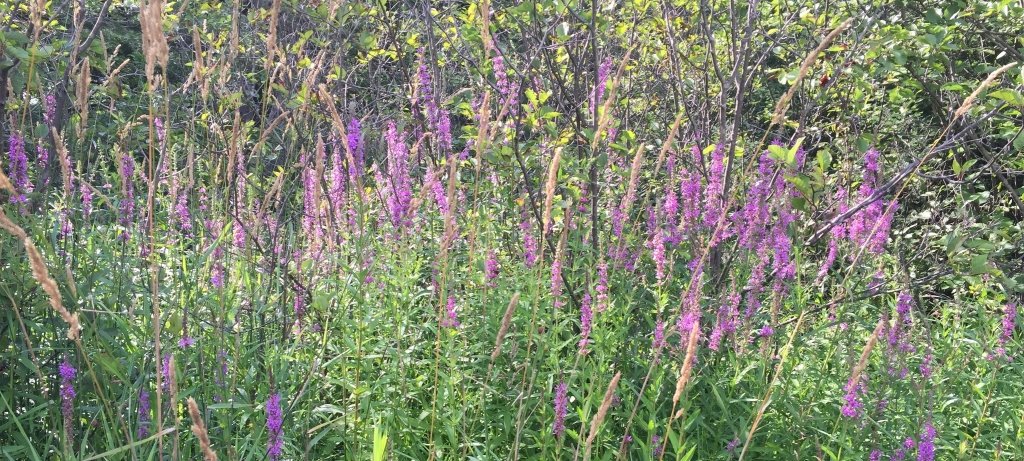Purple loosestrife flowers
Image credit: Sigrid Resh

Purple loosestrife flowers
Image credit: Sigrid Resh
Purple loosestrife, a herbaceous perennial that is in the Lythraceae family, is a wetland invasive that prefers full sun and wet soil but is able to grow in shaded, drier conditions as well. Common identifying characteristics of this species include:
For more information visit Midwest Invasive Species Information Network (MISIN).

Purple loosestrife invading a wetland boardwalk
Image credit: Sigrid Resh

Flowers of purple loosestrife
Image credit: Sigrid Resh
As purple loosestrife forms thick monocultures, the plant can be particularly difficult to manage and remove depending on the size of the stand. While small stands of purple loosestrife can be manually removed quite easily, larger stands are much more difficult to remove. KISMA uses hand pulling and a form of biocontrol to manage this invasive. A leaf-eating beetle (Galerucella sp.) is sometimes used as a biocontrol agent on larger populations. These beetles will feed on the leaves and flower buds of the invasive which can greatly decrease the population. Manual management can be done following these steps:
Note: While removing purple loosestrife, it is extremely important to remove all root and stem fragments as they can reestablish themselves. It is also important to remember to wash your clothes and equipment after removal or treatment as to not track purple loosestrife seeds to other areas.

Leaves being eaten by beetle (Galerucella calmariensis)
Image credit: Sigrid Resh
Whenever purple loosestrife is removed from a site, it is crucial to replace the purple loosestrife with native alternatives to keep it from growing back and to cover up any exposed topsoil. Species such as swamp milkweed, joe-pye weed (Eutrochium maculatum), blue vervain (Verbena hastata), and marsh blazing-star (Liatris spicata) are all tall herbaceous perennial flowers that look extremely similar to purple loosestrife and would make great alternatives.